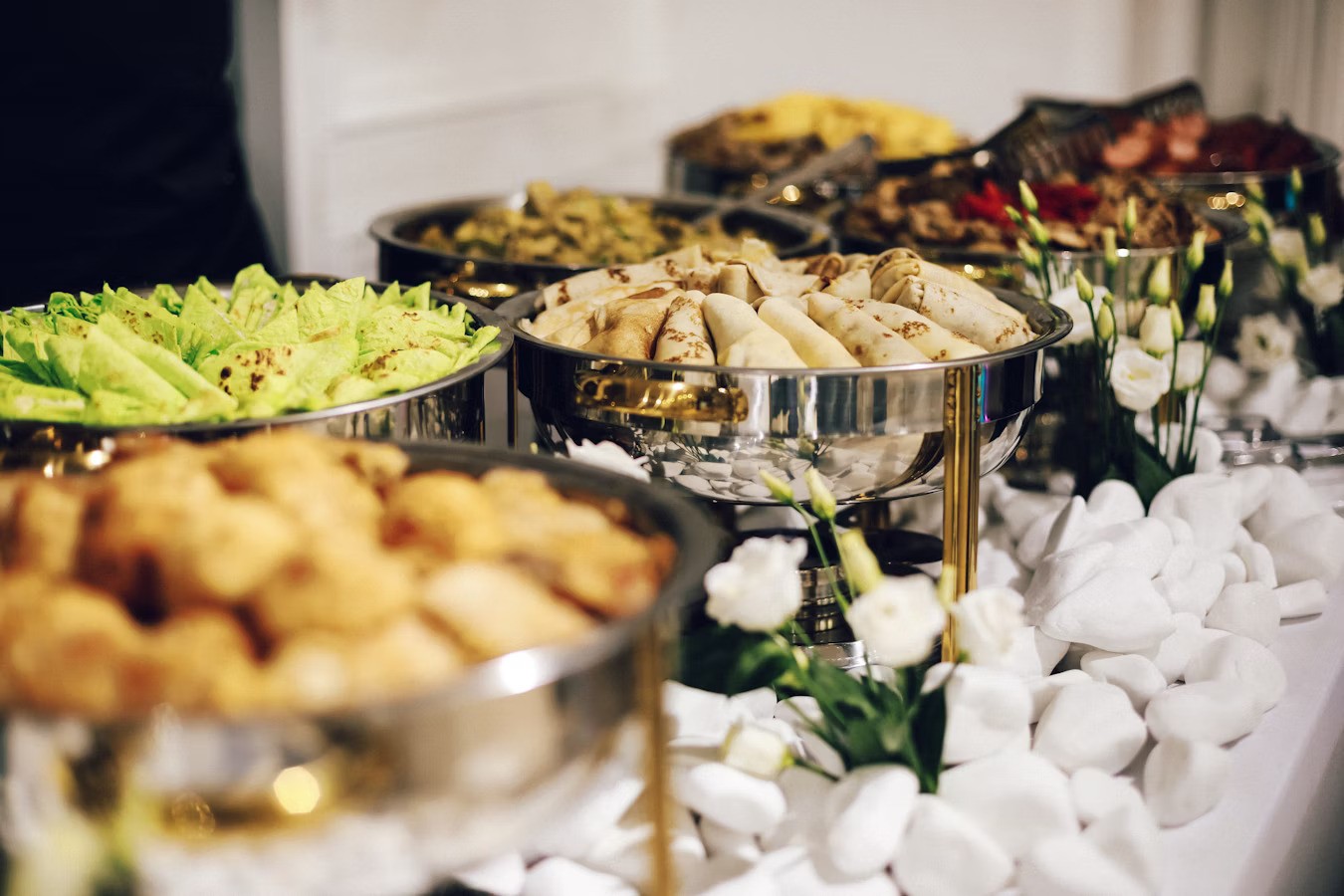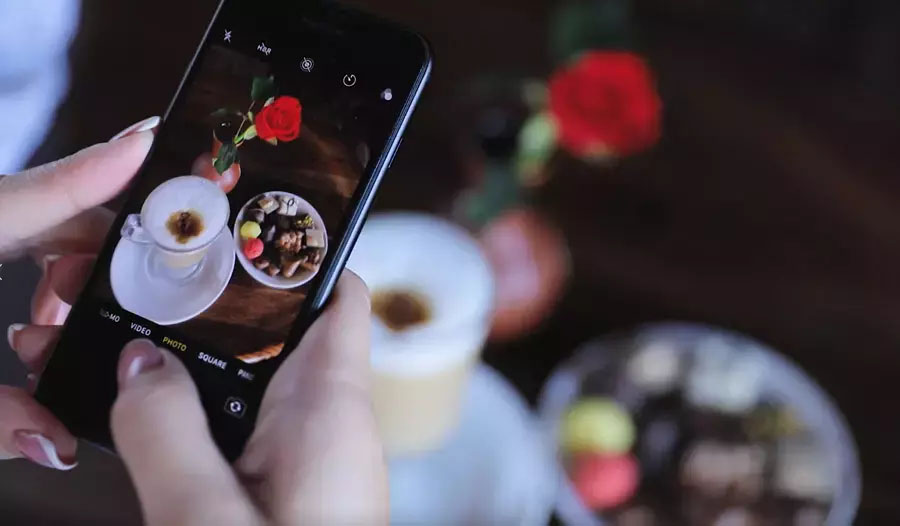Plating for the Camera: A Chef’s Guide to Food Photography That Sells the Dish
You know how much thought goes into plating a dish that genuinely reflects your craft. But no matter how balanced the flavours or how precise the garnish, if it doesn’t look the part on camera, it won’t make an impression online.
Food photography isn’t about vanity—it’s about visibility. A well-composed image can get your dish seen, shared, and remembered. And in a world where chefs are also content creators, knowing how to shoot your food well is as valuable as knowing how to season it.
This isn’t about filters or influencer fluff. It’s a practical guide for chefs who want their food to look as good on screen as it does on the pass.
1. Use Natural Light Like It’s a Key Ingredient
The most flattering light source for food? Natural daylight. No contest. It brings warmth, depth, and true-to-life colours that artificial lights often distort.
Set your scene near a window, preferably with indirect light. If the sun’s too harsh, diffuse it using a sheer curtain or even parchment paper. North-facing windows work best for consistency. For evening shoots, stick to one artificial light paired with a diffuser and bounce card to avoid harsh shadows and colour casts.
Overcast day? Perfect. The cloud cover acts like a giant softbox.
Pro insight: Watch how light moves across your plate. Even the reflection off a stainless steel pan or a white enamel bowl can add depth—small details that elevate the shot. Spiteri Catering stocks a wide range of these finishing tools if you’re looking to subtly upgrade your styling kit.
2. Think in Stories, Not Just Plates
A well-plated dish already tells a story. Your photography should simply extend that narrative.
Start by identifying your hero object—the focus of the dish. Is it the crust on a piece of roast pork? A glossy sauce? A delicate quenelle? Everything else in frame—backgrounds, props, lighting—should support that focal point.
Then, explore angles like a director framing a scene:
-
Top-down (90°): Ideal for spreads and flat dishes—think breakfast trays or mezze boards.
-
45° angle: Natural and versatile; great for showing height, layers, and context.
-
Eye-level: Creates drama, especially with stacked or sculptural elements.
-
Close-up: Focus on texture and finish—crispy skin, sauce sheen, or sugar crust.
Tip: Use available surfaces—chopping boards, metal trays, slate tiles—as mini stages. Spiteri Catering’s back-of-house gear often doubles brilliantly for this purpose. A seasoned roasting tray or old copper pan tells its own story.
3. Small Space, Big Creativity: Vary Backgrounds and Perspectives
You don’t need a studio. You need curiosity and a few adaptable tools.
Even in tight spaces, you can keep your food photography varied and interesting. Rotate your backdrops—an aged board, a slab of marble, or even an upturned baking tray can become the perfect textural counterpoint. You’re not shooting a set; you’re building a moment.
-
Use different heights—stack plates on cookbooks, shoot down from a step stool, or shoot up from the table’s edge.
-
Shift the angle slightly—5–10 degrees can transform a shot’s depth.
-
Introduce foreground elements—blurred cutlery, folded linen, or a pouring hand—to give your frame context and movement.
Resourceful styling tip: Many chefs underuse what’s already in their kitchens. From vintage ladles to rustic ramekins, Spiteri Catering offers access to presentation tools you’d usually only see in editorial shoots—but practical enough for daily service too.
4. Style the Dish, Not the Scene
Food should look like it belongs—on the table, in the moment—not like it’s been staged for a catalogue.
Start with the plate. Avoid overly patterned or glossy finishes unless you want reflections dominating your image. Matte ceramics, dark stoneware, or worn wood lend an honest, tactile quality.
Keep props minimal. Use items that reflect the dish’s character—natural linen, aged cutlery, a sprig of herb on a textured surface. Limit your palette to 2–3 tones so the food remains the star.
Professional chef’s shortcut: Building a small collection of neutral plates and cutlery (the kind available through Spiteri Catering) gives you instant flexibility without needing a prop cupboard. Think of it like your mise en place for photography.
5. Garnish with Restraint and Purpose
Every element on the plate should do one of three things: enhance flavour, contrast texture, or balance colour. Garnishing for garnish’s sake reads as artificial—and the camera magnifies that.
Use fresh herbs, edible flowers, crushed spices, or shaved citrus to add colour contrast and movement—but keep it tight. A single herb leaf placed with intention will always look better than a random scatter.
Add garnishes at the last second, especially if they’re delicate. And if you’re working under hot lights or on set for a while, have backups ready.
6. Make It Look Like It’s Just Been Served
The most enticing food photos evoke freshness. That just-served, can’t-wait-another-second-to-eat-it look.
Here’s how to achieve it:
-
Capture steam using microwaved damp towels hidden just out of frame.
-
Snap the shot as a final flourish is added—pepper being cracked, sauce being poured, a spoon breaking the surface.
-
Create small imperfections—drips, crumbs, slightly uneven garnishes. These human touches signal authenticity.
Bonus move: Cast a shadow from a slotted spoon or whisk across the frame. That small gesture suggests motion and gives your photo real-world energy.
7. Edit Like You Plate: Season Gently
Post-processing should bring out the best in your image—not cover poor lighting or weak composition.
Use editing software like Lightroom or Capture One to:
-
Fine-tune exposure and contrast
-
Correct white balance for natural colour
-
Lift shadows or tame highlights where needed
Avoid heavy filters. A consistent, clean aesthetic will always serve you better than trend-based editing styles.
Real-world advice: Make sure you’re editing on a properly calibrated screen. The photo that looks warm and inviting on your phone might appear cold and grey on someone else’s if your monitor is off.
8. Troubleshooting: Fix the Flaws, Fast
Even seasoned chefs miss the mark occasionally. Here’s a quick fix guide for common food photo issues:
-
Too dark? Move closer to natural light. Increase ISO moderately, or reflect more light with a white board.
-
Colours look dull? Check your white balance or shoot next to something neutral (like a plain ceramic bowl).
-
Flat image? Add height, layers, or elements in the foreground to create depth.
-
Looks staged? Loosen the composition. Mess the linen slightly. Add a crumb trail or an off-centre spoon.
Practical tip: Use your plating instinct. If the dish wouldn’t leave your kitchen looking like that, it probably shouldn’t leave your camera roll either.
9. Share with Purpose (Not Just for Likes)
Posting regularly helps build your audience—but consistency is more important than frequency. Share what tells your story, not just what gets likes.
-
Post 2–3 times a week with intent.
-
Use specific hashtags—not just #foodie or #instafood, but ones tied to your cuisine, region, or restaurant.
-
Tell short stories—why the dish was created, what inspired the plating, what’s changed from last time.
-
Engage—reply to comments, repost tags, and share prep behind the scenes.
Insider note: If you’re hosting a shoot or prepping visuals for a special menu, consider pulling a few showpiece pieces from Spiteri Catering’s hire range. A single stone platter or matte black saucepan can shift the entire visual tone.
Final Checklist: Before You Hit Post
Ask yourself:
-
Does this photo tell a story?
-
Is the lighting natural and appetising?
-
Can you almost feel the texture?
-
Is the hero object clear?
-
Would you stop scrolling for this?
If you’re nodding yes, your food is ready to speak for itself.
Closing Thought
Food photography is no longer a bonus skill—it’s part of how chefs communicate. Your plating, your creativity, your craft—they deserve to be seen clearly, with the same care and precision you give every dish. With just a few mindful tools, the right light, and a little compositional intent, you’ll capture not just images, but appetite.
And if you need that perfect plate, an understated prop, or just a fresh take on kitchen gear, Spiteri Catering quietly stocks the kind of items that help your food stand out without ever shouting for attention.


